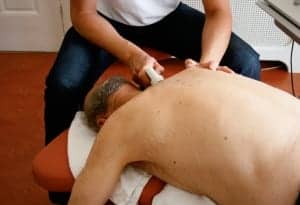Researchers from University of Nebraska-Lincoln, Harvard Medical School, and MIT have designed a smart bandage able to help heal diabetic skin wounds via a microcontroller triggered by a smartphone or other wireless device.
The bandage consists of electrically conductive fibers coated in a gel that can be individually loaded with infection-fighting antibiotics, tissue-regenerating growth factors, painkillers, or other medications.
A microcontroller no larger than a postage stamp, which could be triggered by a smartphone or other wireless device, sends small amounts of voltage through a chosen fiber. That voltage heats the fiber and its hydrogel, releasing whatever cargo it contains, explains a media release from University of Nebraska-Lincoln.
Ali Tamayol, assistant professor of mechanical and materials engineering at Nebraska, notes that a single bandage could accommodate multiple medications tailored to a specific type of wound, while offering the ability to precisely control their dose and delivery schedule.
“You can release multiple drugs with different release profiles. That’s a big advantage in comparison with other systems. What we did here was come up with a strategy for building a bandage from the bottom up,” Tamayol says.
“This is a platform that can be applied to many different areas of biomedical engineering and medicine.”
Although the researchers have patented the bandage’s design, they say they will need to perform several more animal and human tests before marketing it.
In the meantime, per the release, the researchers are also working to incorporate thread-based sensors that can measure glucose, pH and other health-related indicators of skin tissue. They suggest that integrating that capability could allow them to create a bandage that could autonomously deliver proper treatments.
A study discussing the bandage was published recently in Advanced Functional Materials.
[Source(s): University of Nebraska-Lincoln, Science Daily]




